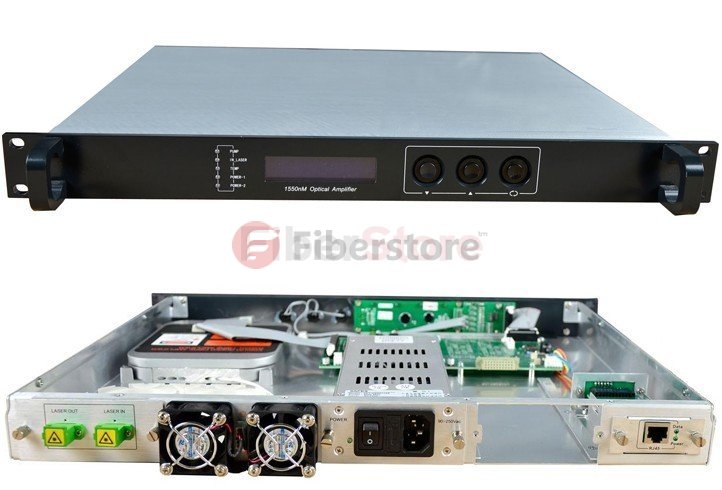As optical signals travel through an optical fiber, they are attenuated. In long-haul applications, the signal is attenuated to the point where re-amplification is required. Traditionally, a device commonly referred to as a repeater accomplished this re-amplification.
A repeater is basically a receiver and transmitter combined in one package. The receiver converts the incoming optical energy into electrical energy. The electrical output of the receiver drives the electrical input of the transmitter. The optical output of the transmitter represents an amplified version of the optical input signal plus noise.
The technology available today eliminates the need for repeaters. Passive optical amplifiers are now used instead of repeaters. A passive optical amplifier amplifies the signal directly without the need for optical-to-electric and electric-to-optical conversion. There are several different optical amplifiers with which to passively amplify an optical signal: Erbium Doped Fiber Amplifier (EDFA), Semiconductor Optical Amplifier (SOA), and Raman Fiber Amplifier (RFA), all of which use a technique called laser pumping.
EDFA
EDFA amplifier is generally used for very long fiber links such as undersea cabling. The EDFAs use a fiber that has been treated or “doped” with erbium, and this is used as the amplification medium. The pump lasers operate at wavelengths below the wavelengths that are to be amplified. The doped fiber is energized with the laser pump. As the optical signal is passed through this doped fiber, the erbium atoms transfer their energy to the signal, thereby increasing the energy or the strength of the signal as it passes. With this technique, it is common for the signal to be up to 50 times or 17dB stronger leaving the EDFA than it was when it entered.
Here is an example of an EDFA. EDFAs may also be used in series to further increase the gain of the signal. Two EDFAs used in series may increase the input signal as much as 34dB.

SOA
SOA amplifier uses a technique similar to that of EDFA but without doping the optical fiber. Unlike the EDFA, which is energized with a laser pump, the SOA is energized with electrical current. The SOAs use an optical waveguide and a direct bandgap semiconductor that is basically a Fabry-Pérot laser to inject light energy into the signal, as shown in the figure below. This technique, however, does not offer the high amplification that the EDFAs do. SOAs are typically used in shorter fiber links such as Metropolitan Area Networks (MANs).

One problem with SOAs is that the gain is very hard to control. By using the semiconductor technique and a waveguide, the signal may deplete the gain of a signal at another wavelength. This can introduce crosstalk among channels by allowing the signal at one wavelength to modulate another.
RFA
RFA amplifier uses a technique called Raman amplification which is a method that uses pump lasers to donate energy to the signal for amplification. However, unlike EDFAs, this technique does not use doped fiber, just a high-powered pumping laser, as shown in the figure below. The laser is operated at wavelengths 60 nm to 100 nm below the desired wavelength of the signal. The laser signal energy and the photons of the transmitted signal are coupled, thereby increasing the signal strength. RFAs do not amplify as much as the EDFAs, but they have an advantage in that they generate much less noise.

These optical amplifiers can be combined to take advantage of their amplification characteristics. In some cases, RFAs and EDFAs are combined in long-haul fiber links to ensure high amplification and decreased noise levels.
In summary, each amplification technique has advantages and disadvantages. Remember to keep in mind the amplification that the amplifier is being used in. For example, if a signal needed amplification but noise was an issue, a RFA amplifier would most likely be the best choice. If the signal needed to be amplified by just a small amount, the SOA amplifier might be best.
All of these amplification methods have one big advantage: optical amplifiers will amplify all signals on a fiber at the same time. Thus, it is possible to simultaneously amplify multiple wavelengths (e.g, the DWDM EDFA is a type of WDM amplifier used to amplify multiple wavelengths in DWDM systems). But it is important to keep in mind that the power levels must be monitored carefully because the amplifiers can become saturated, thereby causing incorrect operation.
